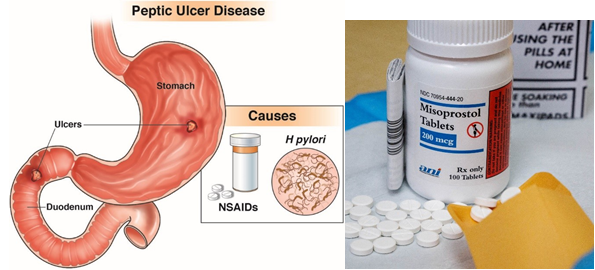When caring for a client with diabetes insipidus who is receiving antidiuretic hormone intranasally, which serum lab test is most important for the nurse to monitor?
Platelets
Glucose
Osmolality
Calcium
The Correct Answer is C
Diabetes insipidus is a condition in which the kidneys are unable to conserve water, leading to excessive thirst and urination. It is treated with antidiuretic hormone (ADH), which helps the kidneys retain water and reduce urine output. When caring for a client with diabetes insipidus who is receiving ADH intranasally, it is important for the nurse to monitor the client’s serum osmolality.
Osmolality is a measure of the concentration of particles in a solution and can provide information about the client’s hydration status.
Monitoring serum osmolality can help determine if the ADH therapy is effective in managing the client’s diabetes insipidus.

Nursing Test Bank
Naxlex Comprehensive Predictor Exams
Related Questions
Correct Answer is A
Explanation
Misoprostol should not be used during pregnancy as it can cause harm to the fetus. Women of childbearing potential should use effective contraception while taking misoprostol. If there is a chance of conception, the healthcare provider should be contacted immediately. A negative pregnancy test is required before starting therapy with misoprostol .

Correct Answer is ["A","D"]
Explanation
The correct answer is:
a. Report any tendon pain or swelling to the healthcare provider immediately.
d. Limit exposure to sunlight and avoid tanning beds.
Choice A: Report any tendon pain or swelling to the healthcare provider immediately.
Ciprofloxacin, like other fluoroquinolones, can cause tendinitis and tendon rupture. This risk is higher in older adults, those on corticosteroid therapy, and those with kidney, heart, or lung transplants. Reporting any tendon pain or swelling immediately is crucial to prevent severe complications.
Choice B: Use NSAIDS to relieve mid joint aches and pains caused by the medication.
This is not recommended. Using NSAIDs with ciprofloxacin can increase the risk of central nervous system effects, including seizures. Therefore, it is not advised to use NSAIDs to relieve joint aches and pains caused by ciprofloxacin.
Choice C: Crush and mix the tablets with pudding if you have trouble swallowing the tablets.
Ciprofloxacin tablets should not be crushed. Crushing the tablets can affect the drug’s effectiveness and increase the risk of side effects. If swallowing is an issue, the healthcare provider should be consulted for alternative forms of the medication.
Choice D: Limit exposure to sunlight and avoid tanning beds.
Ciprofloxacin can increase the skin’s sensitivity to sunlight, leading to severe sunburns. Patients are advised to limit their exposure to sunlight and avoid tanning beds while taking this medication.
Whether you are a student looking to ace your exams or a practicing nurse seeking to enhance your expertise , our nursing education contents will empower you with the confidence and competence to make a difference in the lives of patients and become a respected leader in the healthcare field.
Visit Naxlex, invest in your future and unlock endless possibilities with our unparalleled nursing education contents today
Report Wrong Answer on the Current Question
Do you disagree with the answer? If yes, what is your expected answer? Explain.
Kindly be descriptive with the issue you are facing.
